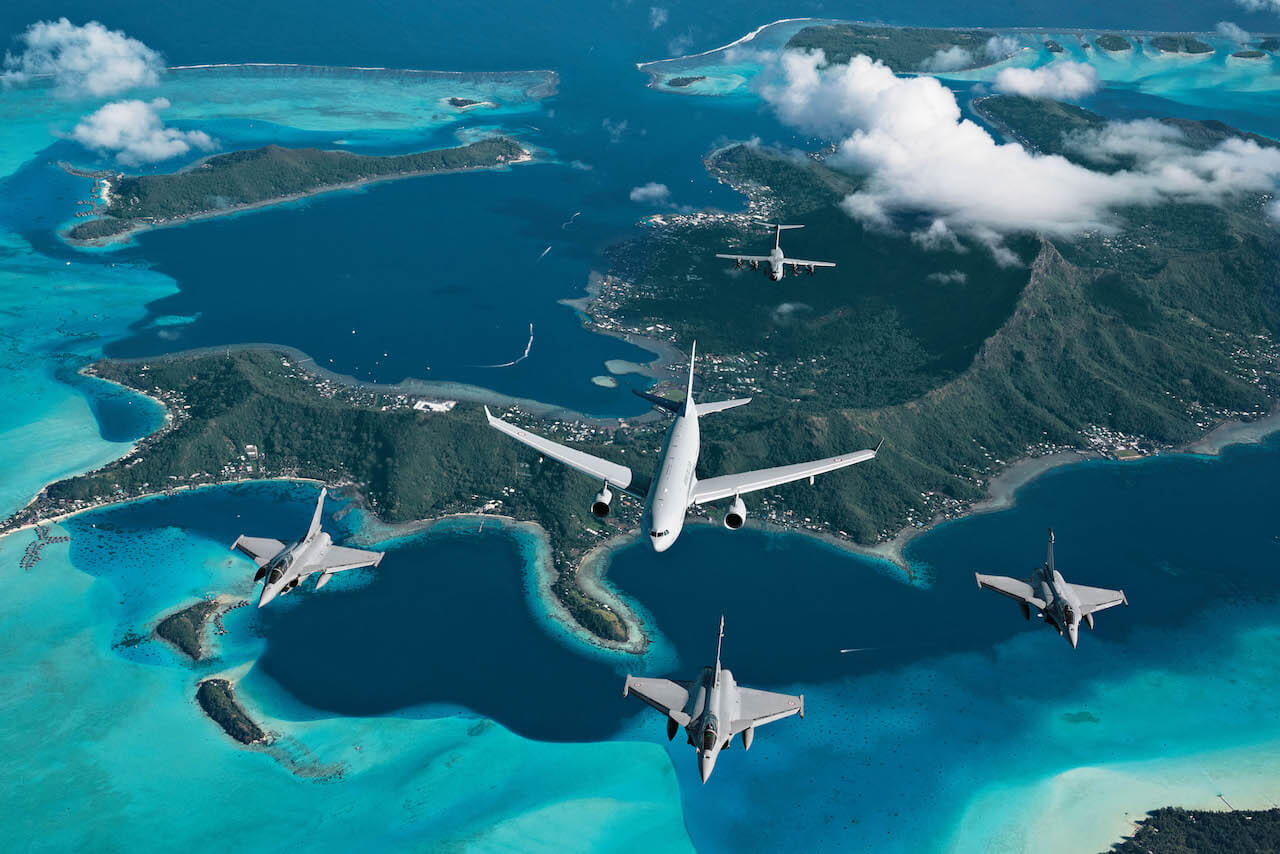The French Air Force (Armée de l'Air et de l'Espace) is planning a new Pegasus mission, comprising 10 Rafales, 5 Airbus Phénix and 4 Atlas, for a month from the end of June to the end of July.
Ramping up French projection in Indo-Pacific
Promised as a strategic priority by the President of the French Republic, the Indo-Pacific has for several years been a destination for air missions with valued stopovers, both on the outbound and return legs. The 2023 edition of the Pegasus projection raises the bar even further, with a likely volume of 10 Rafales, 5 Phénix (almost half the fleet, now at 11 aircraft, which will be increased to 13 by the end of the year) and 4 Atlas (i.e. 19%, out of a total of 21). Even though operational commitments have been significantly reduced in the Sahel and the Levant, the effort is significant, particularly for the Phénix, which also continues to contribute to strategic projections and nuclear deterrence (by way of comparison, the Pegasus 2022 mission mobilized just three Rafales, two Phénixes and an A400M, i.e. more than three times less).
But this does not fulfill the vision that previous Chief of Defence Staff Philippe Lavigne had of projecting 20 Rafales and a dozen tankers in the Pacific. An objective he had set for... 2023, but that was before the Rafale drawdowns for export, and the war in Ukraine, which has recast a number of French operational requirements, concerning Rafales and Phénixes, for example. Even if it remains obvious that in the event of a large-scale operation (Pegasus is only an exercise, a complex one, but an exercise), we would find these 30 aircraft.
19 aircraft projected for one month
With 19 aircraft projected for one month, the French Air and Space Force is nevertheless setting the bar very high with the equipment it possesses and the contracts it has to fulfill. The composition of the mission was probably set in part with the tankers : one is needed to refuel two fighters on long projections of this type, while carrying personnel in excellent conditions and freight if required (the Phénix have a mixed cargo configuration with 88 passengers).
The advantage of such a package is that it can make France's participation in the large scale global exercise (LSGE), one phase of which is being held in Guam in July, particularly credible and profitable. Organized under the aegis of INDOPACOM, the major American command in the Pacific, this multi-domain, multi-field exercise is designed to involve the zone's allies in a demonstration of power, while meeting the need for high-intensity training and interoperability between allies. Like the recent Orion exercise in France, which met the same imperatives, it is taking place in several stages: it began on May 24 and will run until August 19. The Armée de l'Air et de l'Espace will contribute to the exercise for almost three weeks.
Stops in Rafale countries
On the way out and on the way back, the Armée de l'Air et de l'Espace will switch to Morane mode, with smaller detachments enabling maximum coverage in minimum time, which is also a great training ground for personnel. These Morane detachments have multiplied in recent months, particularly in eastern and far northern Europe, demonstrating the Air and Space Force's ability to deploy two fighters with a handful of mechanics, often without a tanker, for a period of several days.
The list of Pegasus stopovers is not yet consolidated at this date, but should include most of France's leading allies in the region, most of whom have already been visited during previous stopovers, such as the United Arab Emirates, India, Indonesia (three Rafale countries), Singapore... These stopovers are often highly beneficial in further developing the links already forged with these air forces, while testing local logistical capabilities with a view to future deployments. This had already been one of the major points of Pegasus 2022.
Découvrez cet article sur Air&Cosmos

